It was in the early part of 1902 that I, fresh from my native village Ngoi Hoi near Kongmoon, the 3rd port of Kwaongtung, China, first set foot on the terra firma of this British Outpost called Hongkong. Acting under my eldest brother's instruction, I came for an education in English. Let me recount some items of interest in those gone-by days in the following paragraphs.
At that time the Harbour Office was housed in the present Sheungwan Branch Post Office opposite the Western Market, North Block, on the side of Morrison Street. The typhoon signals were hoisted on a mast planted in the position where now are many wholesale fruiterers.
The big wharf on the then Praya was the Canton, Hongkong and Macao Steamboat Company, commonly known as the Fatshan Pier (aka as the Triangle Pier to the locals). Reclamation had just started on the Waterfront and that gave us Connaught Road, West.
At the top of Pedder Street by Queens's Road, Central, majestically stood the Clock Tower which regulated the standard time of the Colony. Within quite recent years, on account of increased motor traffic, it had to be pulled down.
The roads were all macadamized, but with the introduction of automobiles, the surface of the roads had to be asphalted. Scavengers used broad bamboo brooms, especially made for sweeping the wide streets which were daily sprinkled with water from water-carts drawn by buffaloes and directed by Sanitary Coolies, mainly to keep off the dust.
The Fire Brigade was located in the portion between Wellington Street and Queen's Road, Central, where the Ho Tung Building is. A large bell placed on the top of the Fire Brigade controlled the fire alarm. The alarm was proclaimed by first ringing continuously for a few seconds, followed by one stroke, meaning fire occurring in the Eastern District, by two, indicating Central, and by three, showing Western District.
Fire engines were worked by steam. Two big strong ropes attached to the engine had to be pulled by coolies who were usually engaged on the spot. As many engines as needed would thus be despatched to the shore near the scene, and water was pumped to fill the hose for extinguishing the flames.
All firemen were Europeans most of whom did police work as well. These officers looked after the actual fire fighting, although some Chinese were also employed to do the coupling of hose and attending to odds and ends. The training of Chinese officers and men in the Fire Brigade was really an innovation of about 30 years, and it proved very satisfactory and successful. The same procedure applied to the other Government Departments : Education, Police, Sanitary, etc in securing Chinese for important and responsible positions.
To cope with a fire on board a vessel, one Fire Float used to anchor off the Harbour Office, ready for work at short notice. She would steam out to fulfil her duty when her service was required. Compared with these Fire Floats, installed with up-to-date machinery for speed and competence, she is but a dwarf. What a change! Today we have modern engines, capable of ejecting huge volumes of water and carrying ladders that can be extended to several storeys high. Science alone has revolutionized so many things that we are apt to forget what we had in the past.
With regard to the Police Force, it was composed of 3 nationalities, European-class A, Indians-class B, and Chinese-class C. The men of the first class were armed with revolvers with additional training in the use of rifles for emergency sake, while the C class members had no other weapons than the sword for night duty only. Chinese constables carried the swords of about 2 feet long by their left side, and hence, when they ran they had to hold their means of protection with their hands.
The most striking feature was the lantern, named the Bull's Eye, which is in fact an oil lamp or Searchlight as you may call it. As it served the purpose of showing the way or object in the vicinity, the glare had to be shielded by a sliding door when not in use. Nowadays, electric torches take the place of the Bull's Eye, giving better service and proving much handier.
Chinese policemen wore clothing of their own native style, i.e. coats and trousers that were tugged up under the tops of stockings with Chinese cloth shoes too. Instead of the present-day helmets, they topped their heads with pointed bamboo-woven hats, the kind firemen in China used to protect their skulls from splinters or falling debris.
In the Education Department, situated in an ordinary house at the junction of Hollywood Road and Wyndham Street, slightly opposite Glenealy, one English and one Chinese inspector were all the officers managing the whole educational system in Hongkong.
In my school days, Mr Erving filled the post of Inspector of English Schools, while that of Chinese Schools was taken up by Mr Sin, whose son is a doctor practising in Hong Kong. Indeed, we only had the three R's : Reading, Writing and Arithmetic plus Geography, History and Chinese. It was not until 1904 when School Hygiene, a book published chiefly for enlightening the people in matters of health, was added to the curricula of schools. Other additions were Algebra, Geometry, Physics, Chemistry and Physical Culture.
King's College, the youngest member among the fountainheads of knowledge, has the good fortune of being equipped with a swimming pool and a gymnasium. Thanks to that institution where my 2 sons graduated, they are now making their own way in this world of chaos.
Last but not least, a mention about public transportation will not be out of place. To cross Victoria Harbour, the Star Ferry was the oldest and did the greater bulk of business. However, there were some small launches belonging to different companies, plying between the Island and Yaumati on the mainland. At one time the rivalry among these ferries was so strong that men were stationed on the shore shouting "Hurry up! This boat will leave soon! Third Class one cent only!" That was how they solicited business. Those launches berthed on the piece of ground between the Custodian Wharf and the Vehicular Ferry Pier.
Approximately 30 years ago, the Hongkong-Yaumati Ferry Company came into existence, paying the Government a certain amount of annual tax. Most of their boats are oil burners, fast and steady, particularly useful being those few Vehicular Ferries offering such convenience to motorists.
On land, horse coaches were the most popular and the best means of conveyance. In addition, bicycles and rickshaws played a very important role in the life of the people then.
Later the tram improved the condition of traveling greatly, for the fare was within reach of all. At first they charged 2c per station, but that caused not little inconvenience to the collectors, so the HK Tramway Company brought on reforms, by instituting a fixed scale of fares at 10c for First Class and 5c for 3rd Class, as were charged in pre-War days. These have been revised to 20c and 10c respectively to suit post-War requirements, as everything has been raised in price to double, treble, or even a higher figure.
Communication depended on cable telegraphy as the quickest means of transmission of messages for all purposes. With wireless telegraphy and radio-telephone, much convenience is enjoyed by those who wish to save time in business or otherwise. Civil aviation is another factor in narrowing the globe, comfort, speed and pleasure being offered to all who emplane to their destination on commercial or pleasure trips.
Hongkong has been known to have gained rapid progress in rehabilitation after the War, due to steady and thoughtful planning and faithful service to officials, so much so that we do not notice our luck to be among the fortunate ones living in the midst of plenty and tranquility, which some fellow-creatures in other parts of the world cannot hope to share. In conclusion I would say, Let us do what we can for those needful fellows, charitably, educationally and financially.
This is to wish my readers Happiness, Longevity and Prosperity,
CHAN Sing-U
A big thank you to Axel Olsson, who sent in the text for this article. He says, "I used to spend a lot of time in Cat St and I happened on this booklet all printed up in both English & Chinese."
I've added links to related information on Gwulo.com, and inserted some relevant photos that other contributors have uploaded. Thanks to Martyn Gregory and Moddsey for sharing their photos.
The original booklet also provides a brief biography of Chan Sing U, which Axel has summarised for us:
He was one of ten children from the same father, though the family had more than one wife / concubine. He was abandoned by his father at only 7 yrs old.
From China he first went to work as a teacher in Macao. He later moved to Hong Kong to study English at Queen's College where he received his diploma. After getting married he studied commerce before joining Mobil Oil. He worked there as an accountant for 25 years.
When the "Pacific War" broke out, he fled to Macao with his family. He returned to Hong Kong after the Liberation, and although he'd reached retirement age by then, he continued to tutor in English in his spare time.
He had become a respected and popular member of the community. He attended the founding of the Wah Kiu Yat Pao Bldg along with many other VIPs of the day, incudingl the then HK Governor.
If you have any questions, corrections, or additional information, please leave a comment below.
Regards, David
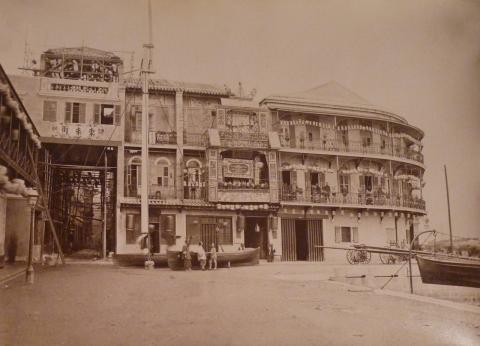

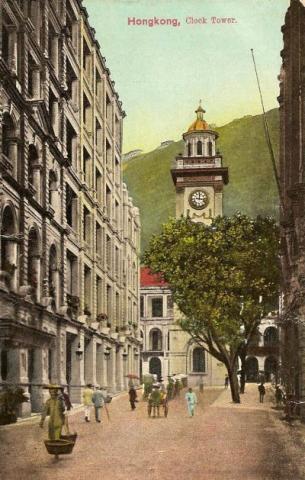
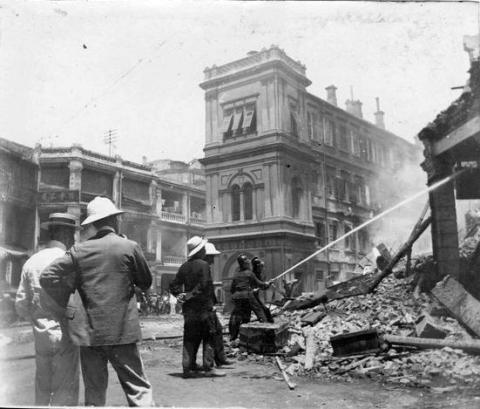
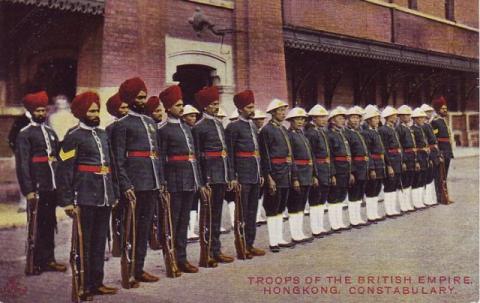

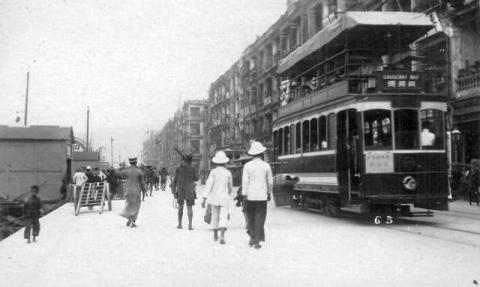
Comments
Photo of Chan Sing U
Thanks to Axel for sending this.
Reminiscing about Hong Kong, 1902 - 1952
Great pleasure to read these memories, especially the last main paragraph! Thank you.
"Ngoi Hoi near Kongmoon" - if it sounds like 荻 海 (Huohai) in Taishanese/Toisanese dialect and today's mainland dialect spelled in English, then he was likely from the southshore of Kaiping a small village called Beishan Mountain in today's Google maps, where my grandfather also named Chan came from.
Regards, Peter